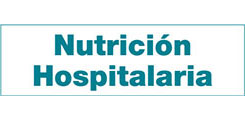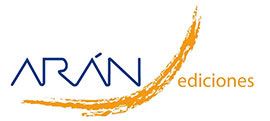Trabajo Original
Causal relationship between tea intake and bone mineral density at different ages ̶ A Mendelian randomization study
Ting Shen, Yining Guan, Jiaru Cai, Yizhou Jin, Yixin Jiang, Jiaying Lin, Chenxin Yan, Jiawei Sun
 Número de descargas:
1529
Número de descargas:
1529
 Número de visitas:
2464
Número de visitas:
2464
 Citas:
0
Citas:
0
Compártelo:
Introduction: bone mineral density (BMD) is strongly associated with the risk of osteoporosis and fractures. Furthermore, dietary tea consumption also has a great impact on the variation in BMD. The pathway mechanisms from tea consumption to BMD are not well known. Therefore, we applied a two-sample Mendelian randomization (MR) approach in an attempt to explore the causality between tea consumption and BMD. And then examine whether the effects of tea intake on BMD are specific across different age groups. Methods: we investigated the relationship between tea consumption and BMD using a two-sample Mendelian randomization analysis, utilizing 31 single nucleotide polymorphisms (SNPs) related to tea intake from pooled data from a gene-wide association study (GWAS) of 447,485 British Biobank of European Origin participants, with BMD derived from a meta-analysis of total body BMD and age-specific effects in the Lifelong Genetic Cohort Study (n = 66,628). Causal analysis between tea intake and BMD was performed using MR-Egger, inverse variance weighting (IVW), weighted median, and weighted mode. Results: in IVW, tea consumption has a positive causal effect on total body BMD. However, in different age groups, BMD has a positive effect only within the 45-60-year group. There is no genetic pleiotropy effect of tea intake can have an effect on systemic BMD or among the five different age groups. The Cochran Q statistic and MR-Egger regression were applied to calculate heterogeneity in the IVW method, and no significant heterogeneity was indicated. Conclusions: the results of the MR analysis showed a positive causal effect of tea intake on total body BMD, whereas among the different age groups, tea intake positively affected BMD only in the 45-60 age group, which implies that tea is beneficial in maintaining or increasing BMD in this age group and may reduce osteoporosis and fracture risk.
Palabras Clave: Mendelian randomization. Tea intake. Bone mineral density.
DOI: 10.1007/s00198-021-05972-w
DOI: 10.1007/s11657-021-01024-2
DOI: 10.3390/nu15132829
DOI: 10.4103/aam.aam_79_20
DOI: 10.1016/j.berh.2017.10.001
DOI: 10.1038/nature14878
DOI: 10.1016/j.berh.2022.101758
DOI: 10.3390/molecules27123909
DOI: 10.1097/MCO.0000000000000988
DOI: 10.1038/s41430-021-00856-y
DOI: 10.1177/0748233717718973
DOI: 10.1007/s00774-023-01479-y
DOI: 10.3390/medicina59061177
DOI: 10.1007/s00198-021-05972-w
DOI: 10.3389/fgene.2023.1220931
DOI: 10.1186/s13059-020-02248-0
DOI: 10.1016/j.ajhg.2017.12.005
DOI: 10.1007/s00198-021-05900-y
DOI: 10.1007/s00198-017-3921-7
DOI: 10.1016/j.jocd.2021.11.013
DOI: 10.1093/ije/dyr036
DOI: 10.1038/s41467-020-14389-8
DOI: 10.2147/IJGM.S314180
DOI: 10.3389/fnut.2022.926190
DOI: 10.1093/ajcn/71.4.1003
DOI: 10.1080/10408398.2014.1001019
DOI: 10.3945/ajcn.113.058255
DOI: 10.3945/ajcn.115.109892
DOI: 10.3389/fphar.2022.1017538
DOI: 10.3389/fendo.2022.1008275
DOI: 10.1007/s00198-006-0109-y
DOI: 10.1093/ajcn/86.4.1243
DOI: 10.1007/s00198-021-05972-w
Artículos Relacionados:
Trabajo Original: Influencia del suplemento con inulina enriquecida con fructooligosacáridos sobre el contenido y la densidad mineral ósea tras el parto y la lactación en ratas
Pilar Bueno Vargas , Manuel Manzano Martín , Inmaculada López-aliaga , José M.ª López Pedrosa
Trabajo Original: Densidad mineral ósea en niños celiacos. indicaciones de estudio y efecto de la exclusión del gluten de la dieta
Cristina Iglesias Blázquez , Francisco Jorquera Plaza , José Antonio De Paz Fernández , Luis Miguel Rodríguez Fernández
Trabajo Original: Densidad mineral ósea e indicadores bioquímicos y hormonales en niños con parálisis cerebral cuadripléjica
Citlalli Álvarez Zaragoza , Edgar Manuel Vásquez-Garibay , Andrea Anaís García Contreras , Alfredo Larrosa-Haro , Enrique Romero-Velarde , Alejandro Rea Rosas , José Luis Cabrales de Anda , Israel Francisco Vega Olea
Trabajo Original: Assessment of nutritional status and bone health in neurologically impaired children: a challenge in pediatric clinical practice
Elena Crehuá-Gaudiza , Mónica García-Peris , Caterina Calderón , Carmen Jovaní-Casano , María Antonia Moreno , Cecilia Martínez Costa
Trabajo Original: Post-menopausal osteoporosis: do body composition, nutritional habits, and physical activity affect bone mineral density?
Özlem Özpak Akkuş , Betül Gülşen
Trabajo Original: Asociación del polimorfismo TaqI del gen del receptor de la vitamina D con la densidad mineral ósea en mujeres mexicanas jóvenes
Trabajo Original: Association between dietary antioxidant quality score (DAQs) and bone mineral density in Spanish women
Trabajo Original: Disminución de masa ósea post-cirugía bariátrica con by-pass en Y de Roux
Trabajo Original: Densidad mineral ósea y adecuación de la dieta en pacientes con enfermedad renal crónica en hemodiálisis
Trabajo Original: Relación del estado nutricio, densidad mineral ósea tanto corporal como mandibular, pérdida dentaria y riesgo de fractura (FRAX), en mujeres pre y postmenopáusicas con periodontitis
Trabajo Original: Densidad mineral ósea, calcio dietético y factores presuntivos de riesgo de osteoporosis en mujeres ecuatorianas de la tercera edad
Trabajo Original: Los niveles de mineralización ósea están influenciados por la composición corporal en niños y adolescentes
Trabajo Original: Valoración del perfil lipídico y de la densidad mineral ósea en pacientes trasplantados renales
Trabajo Original: Efectos sobre la composición corporal y la densidad mineral ósea de un programa de altitud simulada en triatletas
Trabajo Original: Lactancia materna como factor preventivo para la osteoporosis en mujeres adultas
Trabajo Original: Body mass index and risk of inflammatory breast disease: a Mendelian randomization study
Changlong Wei , Xiaofang Wang , Jinsheng Zeng , Gongyin Zhang
Trabajo Original: Metabolismo óseo en pacientes valorados para trasplante pulmonar
Pilar Calmarza , Alejandro Sanz Paris , Clara Berrozpe-Villabona , Alba Gallego Royo , Juan Antonio Domingo Morera , Manuel David Viñuales Aranda
Trabajo Original: Causal effect of sarcopenia-related traits on the occurrence and prognosis of breast cancer - A bidirectional and multivariable Mendelian randomization study
Zhijian He , Lujia Zhu , Jie He , Xinwei Chen , Xiaoyang Li , Jian Yu
Trabajo Original: Clinical value of vitamin K testing in children aged 1-2 years with vitamin D deficiency rickets
Lipu Jie , Lijuan Niu , Tingting Lu , Qing Sun
Trabajo Original: Associations between dietary intake and sarcopenia: a Mendelian randomization study
Nana Zhao , Yunfei Lu , Junjie Liu
Trabajo Original: Causal effects of vitamin D on leukemia risk: insights from two-sample Mendelian randomization analysis
Shupeng Chen , Meiling Zhang , Yao Gao , Yingjian Zeng
Trabajo Original: NHANES data analysis of the cardiometabolic index in relation to lumbar spine bone mineral density
Rui Zhu , Chao-Ren Deng , Shao-Ping Wu
Trabajo Original: Higher frequency of adding salt to foods increases the risk of low bone mineral density in individuals over 60 - A Mendelian randomization study
Ying Li , Yuhan Wang , Lianying Guo , Ye Yu , Mengqi Jiang , Lili Deng , Qingyi Zhou , Lu Sun , Xu Feng , Zhuo Zhang
Trabajo Original: Causal association of childhood body mass index with risk of endometrioid endometrial cancer — A two-sample Mendelian randomization study
Yaochen Lou , Yan Du , Feng Jiang , Jun Guan
Trabajo Original: Two-sample Mendelian randomization analysis evaluates causal associations between dietary habits and rectal polyps
Lingyue Zhao , Chunsheng Cheng , Guozhen Ma , Guangju Feng , Xingguang Wang
Trabajo Original: Association of socioeconomic status and nine modifiable lifestyle factors on esophageal cancer risk in European and East Asian populations — Evidence from a comprehensive Mendelian randomization study
Ruizhi Ye , Fengming Zhang , Guangxian You
Carta Editor: Aleatorización mendeliana en nutrición: el desafío de la diversidad poblacional
Sergio Vladimir Flores-Carrasco , Ángel Roco Videla , Román Montaña-Ramírez
Trabajo Original: Food intake influences the incidence of cardiovascular disease by driving cardiac remodeling — Evidence from a Mendelian randomization
Bingfu Wang , Yulong Song , Yujian Fan , Zhiqiang Zhao
Trabajo Original: Specific dietary micronutrients are causally associated with arthritis subtypes - Results from the NHANES 2015-2018 and Mendelian randomization study
Feng Cheng , Yingjia Zhu , Xiaojing Zhang , Fei Xia
Artículos más populares
Revisión: Inteligencia artificial generativa ChatGPT en nutrición clínica: avances y desafíos
ChatGPT y otras herramientas de inteligencia artif...
Revisión: Suplementación con micronutrientes y sus beneficios: ¿por qué y cuándo?
Introducción: los micronutrientes participan en la...
-
Licencia creative commons: Open Access bajo la licencia Creative Commons 4.0 CC BY-NC-SA
https://creativecommons.org/licenses/by-nc-sa/4.0/legalcode




